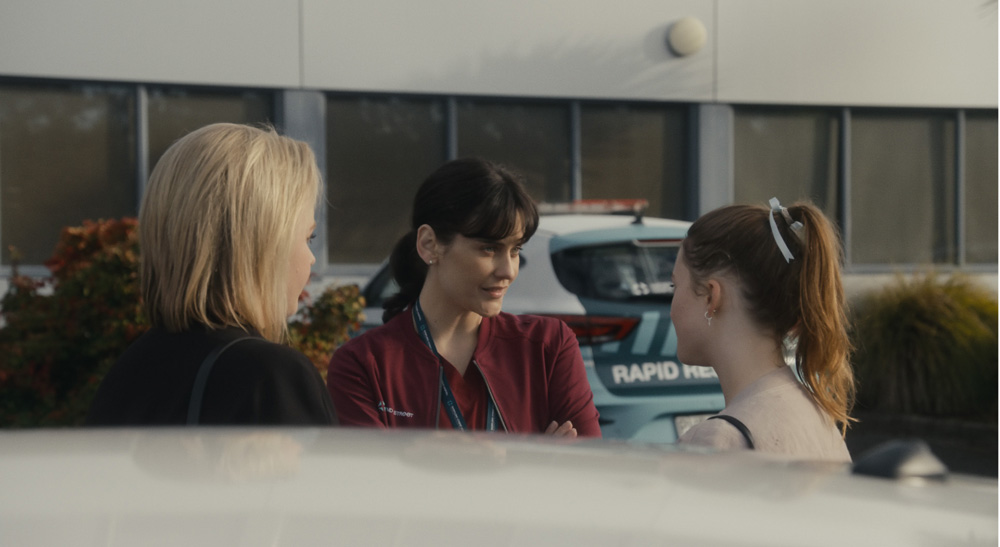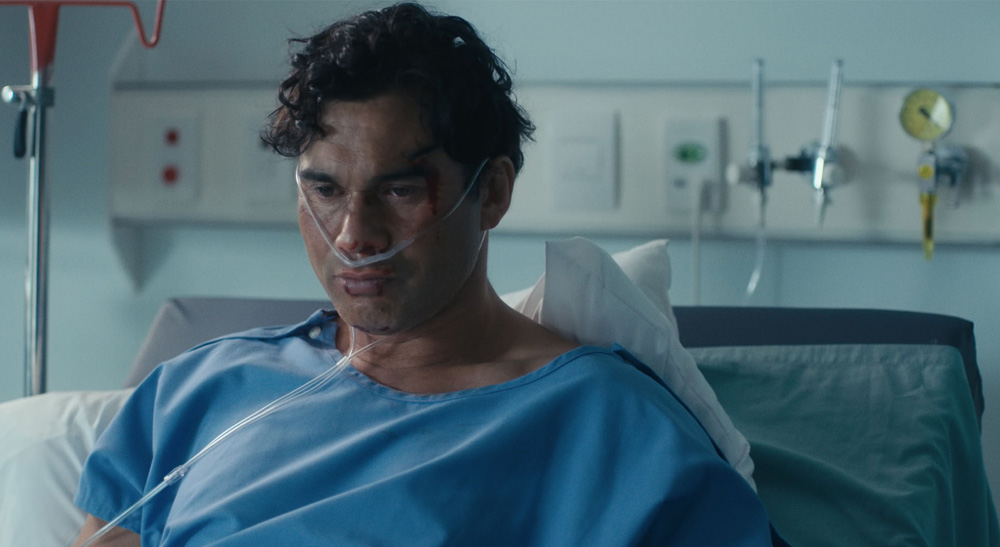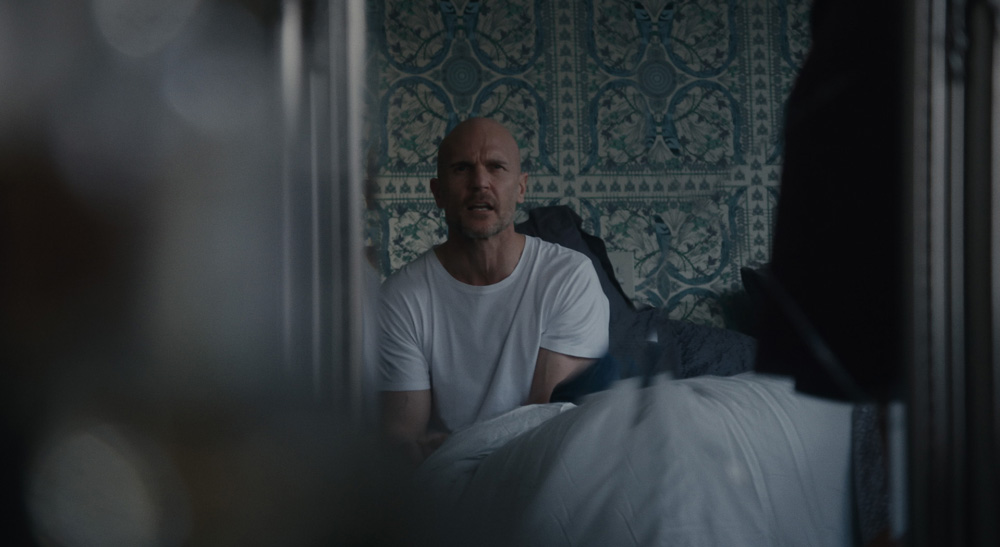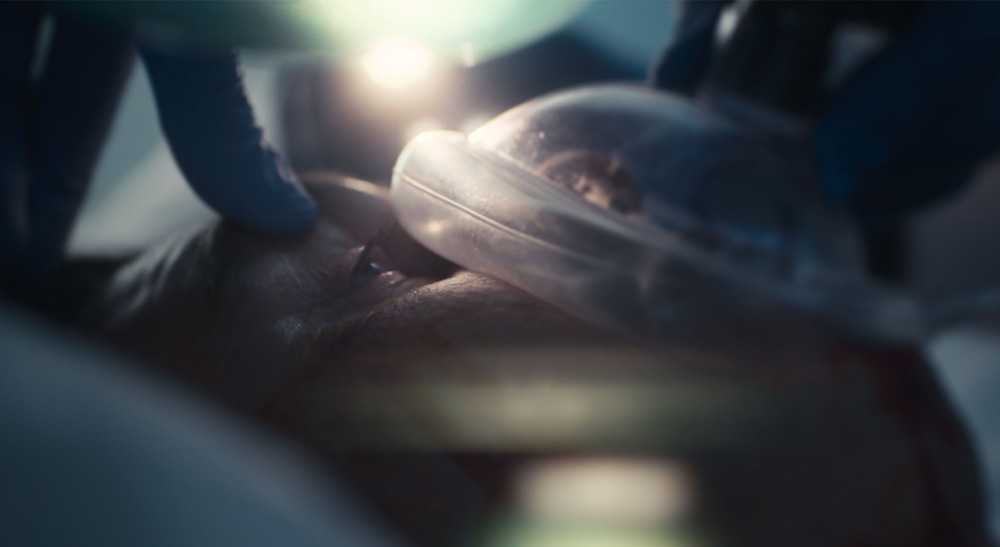The Finishing Suite’s Alastair Tye Samson streamlines post to turnover 110 minutes a week, 46 weeks a year.
Fremont, CA, USA – Thursday, May 29, 2025 – Shortland Street first aired on New Zealand television in May 1992. Its’ 34 seasons have graced screens worldwide, following the complicated personal and professional lives of a hospital’s staff and their families and friends.
The soap opera is New Zealand’s longest running drama, passing 8,000 episodes last year, and it is still one of the most watched television programs in New Zealand, even as viewers transition from watching via broadcast to streaming.
When Alastair Tye Samson, Colorist and Finishing Artist, joined the production in late 2022, the mission from Oliver Driver, Producer, was clear: raise the show’s production value.
Samson explained: “Driver wanted to elevate the look of the show to be a little less ‘soap opera’ and a little more like something that felt at home in the contemporary streaming era.”
Changes to a production of this scale could not be made frivolously, however.
“It’s a huge production with 5 episodes a week, 46 weeks of the year. So even minor changes to workflow need to be well calculated and executed swiftly,” he explained.
The pressures of constant content meant the show had essentially been made the same way for decades, using a multicam studio setup recording 8-bit, Rec. 709 pictures. Each set had a different look preset applied in an offline NLE.

He continued: “Convincing production to switch the studio over to recording 10-bit log was an obvious priority! And I started conforming each episode in Resolve for the grade where I created a new, single, unified look for the show.”
Once the show had been conformed in DaVinci Resolve for the grade, a whole new world opened up.
“Previously, any VFX work that popped up was sent to another app, but once the episodes were in Resolve for grading and the Fusion page was just a click away, keeping everything in one place was a no brainer. Now, all VFX shots like set tidy ups, paint outs, screen replacements and others are all done on the Fusion page inside Resolve,” he said.
Even motion graphics like onscreen text messages are done with Fusion.
“I’m a big fan of creating Fusion macros which allow me to make complicated motion graphics in Fusion, and then publish those parameters to the Edit page where the text can be very simply swapped out each episode. It’s like being able to make my own title design plugins.”
Samson reckons that being able to do color, online, VFX, and motion graphics all on the same timeline in the same app without having to outsource any part of the process is a longtime dream come true.
“Before starting The Finishing Suite, I spent most of my career in bigger facilities and, looking back, the amount of time spent pushing shots between various rooms dedicated to different but overlapping parts of the process was significant. Being able to switch between the Color and Fusion pages inside Resolve as fast as I can think is so efficient by comparison it boggles my mind.

“Over the years I’ve used many different software packages to master pictures and Resolve is the all in one solution I’ve been waiting for. It’s at the point where it really is a fully integrated solution, with fantastic hardware options like the DaVinci Resolve Mini Panel and the Speed Editor. Blackmagic’s overall approach is very pro creator, which is a refreshing change in this industry. They don’t lock you into a subscription model and the software is very affordable. You just buy it once and off you go.”
Alastair says Resolve has so many great features and more keep being added all the time, like the Magic Mask, a DaVinci Resolve AI tool which automatically isolates intricate subjects within a frame.
Samson explained: “My general philosophy is to keep everything as simple as possible, so it can sometimes take me a while to come around to fancy new features like Magic Mask. It wasn’t until we had an episode using the Mind Palace trope (an abstract storytelling device where everything takes place inside the mind of a character in a coma), and Driver wanted two completely different looks for the environment and the characters within that environment to highlight the feeling of otherworldliness.
“Only a few years ago, this would’ve meant farming out a huge amount of rotoscoping work and having to wait to get mattes back from vendors! But the Magic Mask worked so flawlessly at isolating foreground and background elements that I’ve started leaning on it more often as a tool in my day to day grading.
“I’m also really impressed by the community that’s popped up around the DaVinci Colour Transform Language (DCTL) and how some very smart people are making their own custom tools and sharing them freely on platforms like GitHub. If a feature doesn’t exist natively in Resolve, you can bet there’s a DCTL out there somewhere that does what you need.
“It’s the attention to these little quality of life details that is, I think, the most encouraging thing about Resolve and its future. Countless small improvements which, by themselves, you may not even notice but collectively make a massive difference. Particularly in time sensitive productions like Shortland Street.”
He concluded: “It’s really important to understand that the changes made to the show aren’t just about my work. I’m just one puzzle piece in a huge team of amazing people who are all working their butts off week after week to make Shorty look as good as possible.”

About Blackmagic Design
Blackmagic Design creates the world’s highest quality video editing products, digital film cameras, color correctors, video converters, video monitoring, routers, live production switchers, disk recorders, waveform monitors and real time film scanners for the feature film, post production and television broadcast industries. Blackmagic Design’s DeckLink capture cards launched a revolution in quality and affordability in post production, while the company’s Emmy™ award winning DaVinci color correction products have dominated the television and film industry since 1984.Blackmagic Design continues ground breaking innovations including 6G-SDI and 12G-SDI products and stereoscopic 3D and Ultra HD workflows. Founded by world leading post production editors and engineers, Blackmagic Design has offices in the USA, UK, Japan, Singapore and Australia. For more information, please go to www.blackmagicdesign.com.

